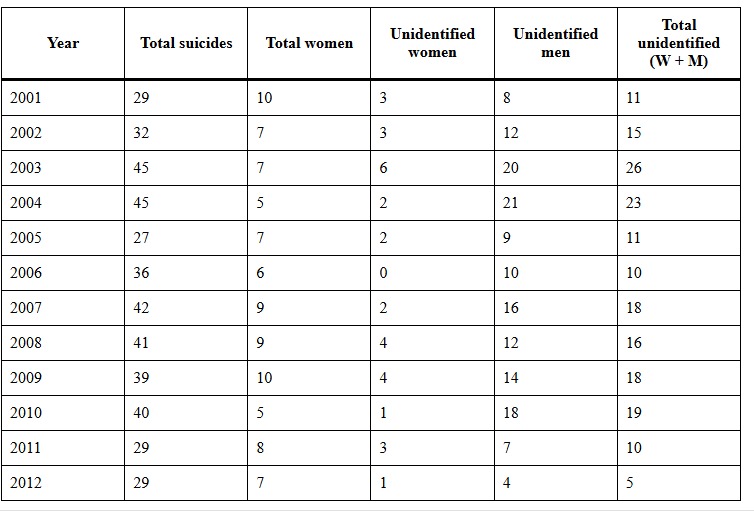
Dharmasthala deaths: 474 suicides in 12 years, 90 women among the dead in temple town, RTI reveals
Dharmasthala
A Right to Information (RTI) request filed in the wake of the 2012 death of 17-year-old Soujanya has revealed a disturbing pattern of suicides in the temple town of Dharmasthala. Between 2001 and 2012, a total of 474 people died by suicide in the town — among them, 90 were women. The data, accessed from official records, has sparked renewed concern over public safety, mental health support, and the mysterious silence surrounding many of the victims.
The years 2003 and 2004 witnessed the highest number of reported suicides — 45 in each year — marking a clear spike that went unaddressed at the time. Perhaps most alarming is the fact that many of these victims remain unidentified. In 2003 alone, 26 of the 45 suicides were people whose identities were never established — 6 women and 20 men. A similar pattern repeated the next year, with 23 unidentified among the dead, including 21 men.
Throughout the 12-year period, an average of 39 suicides were reported annually. The presence of such a high number of unidentified individuals suggests that people may have been arriving in Dharmasthala with the intent to end their lives in anonymity — a haunting contrast to the town’s public image as a place of devotion and redemption.
The figures were made public only after Soujanya’s death led to widespread protests and demands for transparency. Her brutal death — alleged to be a rape and murder — shook the conscience of Karnataka and prompted a deeper scrutiny of the safety of women and young girls in religious and public institutions. The document also shows that in the year Soujanya was brutally murdered 10 others were also killed and seven were women. The identity of one victim is not yet identified by the police.
Tabulation from RTI document

The data also reveals a consistent and worrying number of female suicides — ranging from 5 to 10 women each year — with 2001 and 2009 each recording 10 female deaths. Several of these women were also among the unidentified, indicating a wider failure to trace their origins or connect with any support systems that might have prevented their deaths.

Mental health experts and social workers argue that the lack of identification and follow-up points to a serious gap in institutional response. They stress that when even the identities of victims remain unknown, there can be no meaningful intervention or accountability. The question of what drove hundreds of people — some of them possibly pilgrims — to end their lives in Dharmasthala remains unanswered.
Also read: (Bengaluru advocate files complaint with DG&IGP over police inaction in Dharmasthala mass burials case)
It also may be stressed here that allegations of mass burial surfaced after a former sanitation worker filed a complaint with Dharmasthala police station on July 3. The police have registered an FIR and started a probe. He alleged that he was forced by certain influential persons attached to Dharmasthala Temple Administration to bury hundreds of bodies. He also alleged in the complaint that bodies displayed the signs of sexual harassment.
Also read: (Mass graves and silence: Sanitation worker alleges murders, sexual abuse inside ‘Dharmasthala institution’)

10 thoughts on “Dharmasthala deaths: 474 suicides in 12 years, 90 women among the dead in temple town, RTI reveals”